On the white track
Tasmania’s fickle weather sets the pace on the Overland Trail.
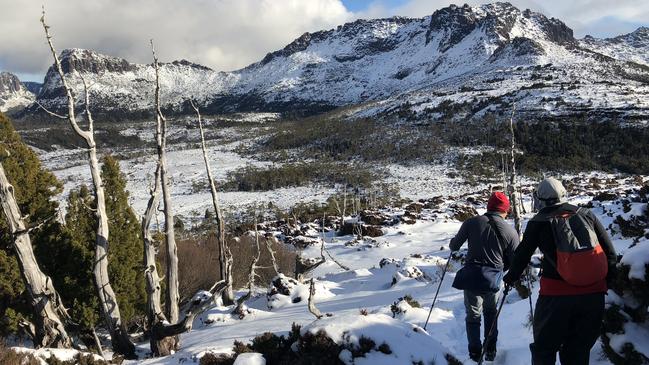
Gustav Weindorfer’s wombat stew was by all accounts a rich blend of garlic and lashings of pepper and other spices, dished out liberally and accompanied by colourful tales shared across the dinner table at Waldheim, a roughly hewn pine lodge on the track to Cradle Mountain. Guests to the remote property early last century wrote home of the rustic chalet and their host’s irrepressible spirit despite the wild alpine weather, isolation and night-time raids on his larder by what he described as bold “striped cats”.
I’m summoning Gustav’s outdoor grit as we crunch through snow past a replica of his historic lodge on the first morning of our passage along the iconic Overland Trail. It’s almost summer but fat snowflakes settle thick on the ground as Tasmania’s capricious weather serves up a wintery blast. Our spritely party is undeterred and full of expectation as we hoof it through a valley carpeted in white.
The morning started easily with a minibus transfer out of Hadspen, near Launceston, cruising through emerald pastures leading to the UNESCO World Heritage-listed Cradle Mountain-Lake St Clair National Park. The four-day walk ahead covers almost 50km, with the toughest leg on day one, but we’ll be staying in comfortable private huts along the way. The contents of our backpacks, filled only with personal possessions, have been pared back by our guides, who will lug supplies for some surprisingly elaborate meals.
We shoulder our loads and begin a steady climb through ancient temperate rainforests and across half-frozen streams. The path weaves higher and leads to the expanse of Crater Lake. Perched on the edge is a rickety old timber boatshed, looking like a strong gust could knock it over. We stop for a bite before winding our way along the lake’s edge.

The fun starts when we reach a chained section of the path where we haul ourselves along the steps and emerge into ferocious winds on an open plateau. We’re close to Marion’s Lookout, but thick clouds hang low, and a buffeting icy gale threatens to bowl us over. Our hosts, the Tasmanian Walking Company, promised some cool alpine air on the four-day trek and mother nature has come to the party, dishing up a classic Cradle Mountain tempest in all its rawness.
One of our guides has been walking in shorts, but when he pulls on his strides I know even the locals are feeling the chill. We strain forward into the gale, climbing through snow to the sanctuary of Kitchen Hut, perched in the shadow of Cradle Mountain.
Built almost a century ago to shelter walkers, the draughty two-storey shanty serves its purpose and we huddle inside while guides boil up steaming hot drinks and hand around treats from a Launceston bakery. On a clear afternoon we would be admiring Cradle Mountain in all its jagged splendour, but today cloud conceals the spectacle. Our spring trek is feeling more like a polar challenge, and we find out later the mountain was closed to hikers after our departure.
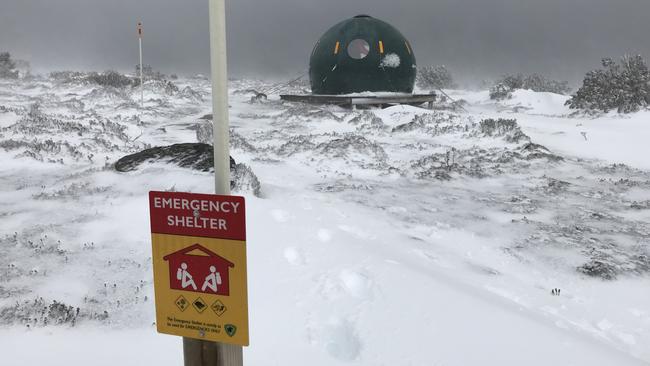
After warming victuals we’re off again in single file, tramping in each other’s footsteps and at times knee deep in snowdrifts. Passing dark cliffs on our left, the weather lifts briefly, delivering a spectacular view across plains to the hulking outline of Barn Bluff, like Tolkien’s tower of Mordor with only its peak hidden in mist. We push on along the alpine plateau and pass the odd sight of an emergency fibreglass shelter known affectionately as the “love apple”. Its green shell looks like a cosmonaut’s rescue pod.
Descending out of the wind, we head for “home”, easing into the shelter and calm of Waterfall Valley. The party is growing tired and my sodden boots are heavy, but by late afternoon there’s an eerie stillness about the buttongrass plains as we step over trickling streams, watched nonchalantly by a Bennett’s wallaby.
With relief the group turns towards our lodgings, Barn Bluff Hut, nestled among a canopy of snow-capped trees at the top of a secluded path. One of our guides has gone ahead to prepare for our arrival, and when we step inside under the fading light of dusk, our world is transformed. The aroma of freshly baked bread wafts from the kitchen and a toasty glow flickers from the heater in living room.
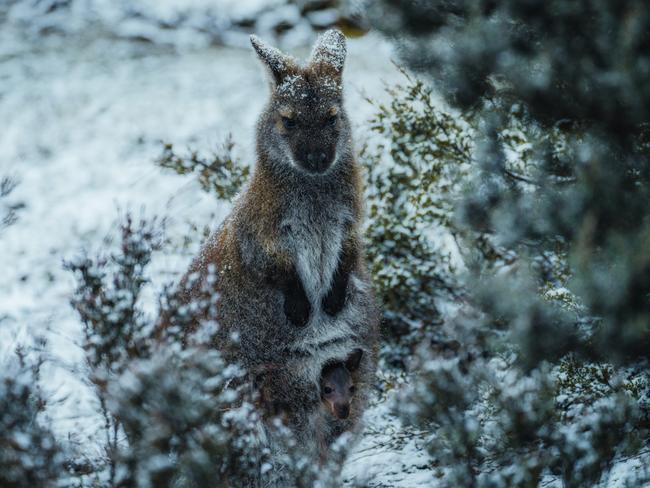
The hut is surprisingly spacious, modern and spotlessly clean. Built of western red cedar, it has a hint of Scandinavian simplicity, with wooden panelling and generous windows gazing on to the snow. The showers are steaming hot and I’m soon cosy and dry, sipping an Entally Estate pinot noir and munching local cheese as fellow trekkers sprawl like sleepy cats around the lounges and on rugs. Indefatigable guides buzz about in the kitchen, slicing and dicing for a supper of farmed Tasmanian salmon with quinoa and almond bake. More wine flows after dinner, a dessert platter is served and one of the guides whips out a Speyside single malt whisky. The tipple of Tamdhu has me close to nodding off and the hut turns in early.
Dawn brings a fresh burst of anticipation as the wind has eased and sunshine peeps through the clouds. After a leisurely breakfast we’re strolling downhill through a forest dusted in snow. We meander through an alpine wonderland past serene Lake Windermere, stopping for lunch where other teams of hikers are gathered at a public hut. There’s plenty of rugged bonhomie among the other trekkers who bunked down during the storm in their damp communal lodgings. We’re feeling a little smug watching them do it tough with three-minute noodles while we tuck in to a fresh lunch of frittata and salad, but polite conversation ensues.
The afternoon is a cakewalk across a snowy landscape. We cross semi-frozen creeks and wander downhill through pencil pine forests and finish day two at Pine Forest Moor Hut. It’s a neat location in the trees, with glimpses of majestic Mount Oakleigh.
One of the guides has raced ahead to prepare our dinner of slow-baked lamb ragout and the scent of roast meat drifts through the lodge. It’s another warm welcome on a cold mountain. Damp boots and wet socks are wrestled from tired legs, backpacks are flung into corners and we’re served steaming hot lemon myrtle scones. The wine flows over dinner and we’re out of range of the internet, so the open living room buzzes with relaxed conversation.
The hut is almost identical to the first night, with compact double bedrooms; it’s like slumbering in a cosy ship’s cabin, tucked up warm while the temperature outside plummets. A guide tells us each of the carefully designed huts was built off site and plonked into the wilderness by helicopter, with supplies deposited and waste removed by chopper only twice a year.
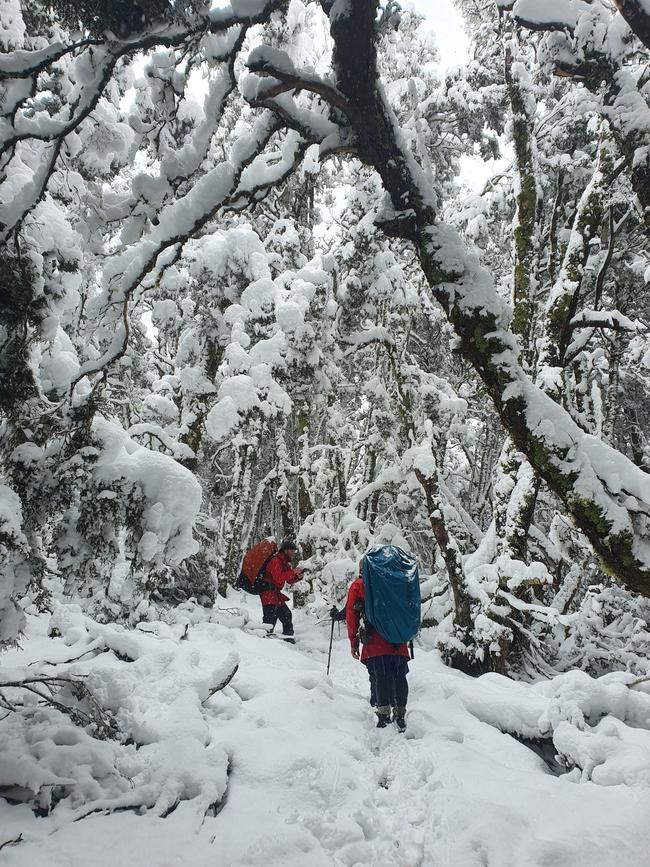
Day three of our odyssey begins with a walk through eerily silent myrtle-beech rainforests, past trees turned green by layers of lichen and moss and a tangle of emerald-coloured roots underfoot like something from a Brothers Grimm fairytale. Guides rattle off the names of native bushes and point out exotic edible plants. There are pink mountain berries to taste, bushes with yellow buds with the faint flavour of butterscotch and celery-top pines with aromatic leaves that when crushed smell like a gin and tonic.
A warming lunch is quickly consumed in the chilly shadows of Frog Flats, where we fill our drink bottles in the gushing Forth River, by some accounts the most pristine water in Australia. The forest glade is an otherworldly setting, but the chill gets into our bones and we’re keen to keep moving. In the afternoon we travel over the Pelion Plains, which in summer hosts a swag of swimming holes. Today there’s a light rain falling and it’s hard to stay still for long without feeling the cold.
In the afternoon the path leads through open eucalypt forest and as we near the plains we pass gnarly peppermint snow gums and king billy pines, some dating back more than a thousand years.
Colossal stringybarks tower over us in the stillness until a cacophony of giant yellow-tailed black cockatoos screech through the skies.
That evening our lodgings are at Pelion Hut, another cosy hideaway concealed off the main trail. A late afternoon snack of fresh cherry and coconut muffins is served and later a supper of penne pasta with a rich tomato sauce. A Holm Oak cabernet merlot goes nicely with the dessert of apple and rhubarb crumble as I ponder returning to life back in the city when our walk ends tomorrow.
Day four brings the welcome warmth of blue skies and sunshine as the snow softens and we cross several swing bridges. It’s wet and slippery but our party balances skilfully. We traverse the plains, gazing across to Mount Pillinger and then take a lengthy downhill exit along the thundering Arm River. It’s flowing furiously after the snow.
The odyssey is over, as we step into a carpark, footsore, weary and muddy. It’s been a challenging walk in unseasonal weather, but there’s a feeling of triumph tinged with relief. We share cold tinnies and friendy banter with a cheery group of local fisherman. One of the trekkers collapses on the bus, content with her effort as she peels away the duct tape that has been holding her battered hiking boots together. They look like they’ve been mauled by a thylacine, but the adventure has left her with a beaming smile. Gustav would have been pleased.
Damian Haarsma was a guest of Tourism Tasmania and the Tasmanian Walking Company.
-
IN THE KNOW
The Tasmanian Walking Company runs four-day Cradle Mountain outings out of Launceston from October to March, offering fully guided treks for up to 12 people. Six-day walks are also available. Accommodation in private huts includes all meals, beverages and wine; $2795 a person. Solo travellers may have to share accommodation.
-
MORE TO THE STORY
For some hard-earned pampering, end your visit to Cradle Mountain with a night outside Launceston at historic Quamby Estate (pictured), where you can sip a G&T on the sweeping veranda of the stately homestead, gazing out across perfectly manicured acreage to the lush Meander Valley.
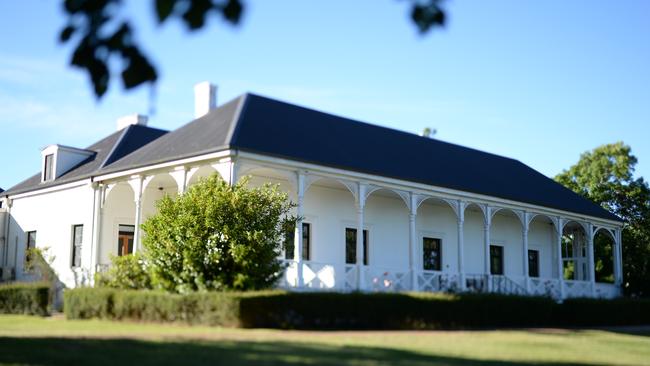
Conjuring up shades of colonial Britain with a subcontinental twist, the sprawling Anglo-Indian estate was built in the 1830s by Richard Dry, the son of an Irish political exile who made good in his homeland and became Tasmania’s first home-grown premier.
Quamby’s 10 guestrooms have been meticulously restored, including a library and lounge stacked with antique furniture and art. With soaring ceilings and elaborate fireplaces, the charming pile harks back to an age of elegance. Play a round of golf before dinner, have a crack at croquet, or fill the massive bathtub and just lie back and think of England.
